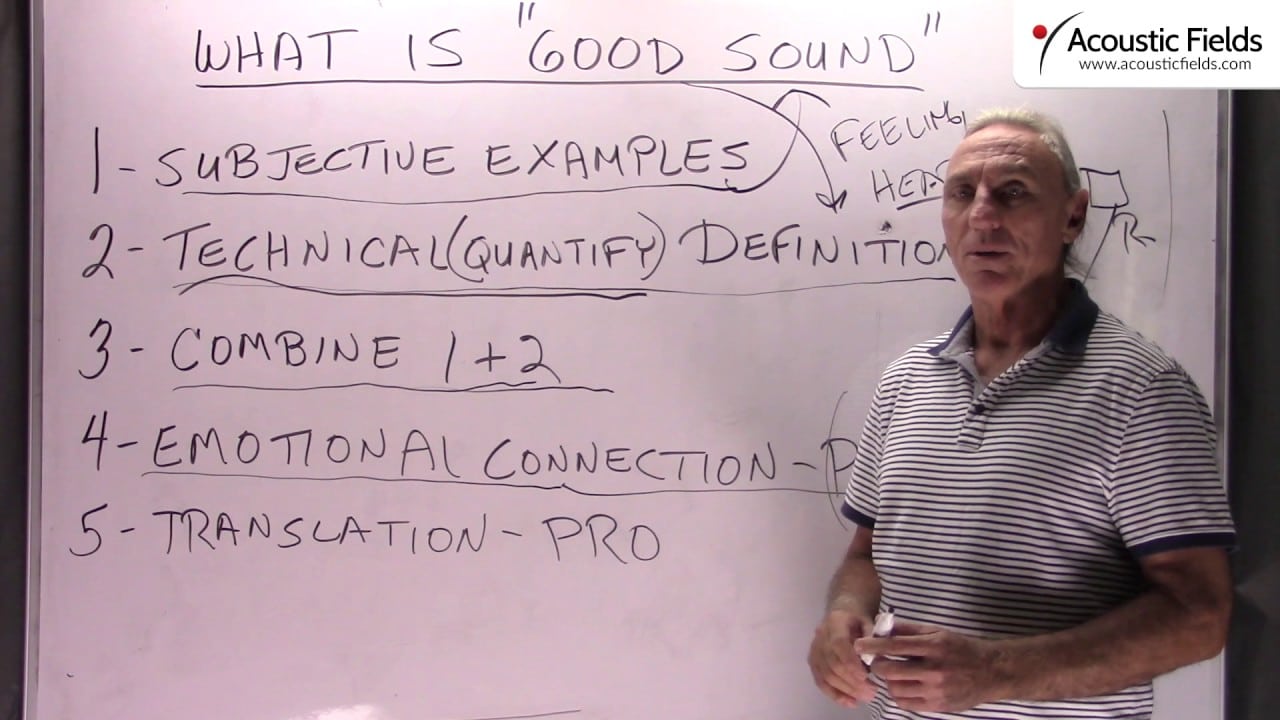Today we’re going to talk about what is good sound. I put it in quotations because I’m sure you’ve had this happen to you, you talk to somebody and say well come over to my studio, come over to my room and listen to the music that we’ve created here and listen to how good it sounds and then you get there and it doesn’t sound that good.
You find the lower ends not really where it could be, you find the middles and highs don’t have decorate definition and separation, there’s a lot of issues because we all have different reference points so I think when people talk about good sound I think what they really mean is how it sounds to them and based on your experiences and knowledge may not sound the same to you. Then we have the technical definition of what good sound is and you know that that can all be measured. We can measure time signatures from reflections, we can measure direct versus reflected energy, there are a lot of things we can do to define technically what is good sound. I think good in this case means everything is heard or everything translates so I think we have a subjective and a technical side to this. So what is the answer, how do we define good sound?
Well I think what we have to do is we have to combine both so we have to combine this objective which is probably more of a feeling quality and then we have to combine it with the technical which is definitions and time signatures and numbers and all of those things. So we get this emotional connection if we combine the two, especially in the playback mode when we’re sitting in front of our speakers and we’re listening there’s an emotional connection that we make with the music, hopefully I mean that’s why we do all this. Hopefully that’s why we do most of it, some days I wonder but the bottom line is you know the emotional connection when you’re playing music back – I don’t care if you’re an engineer or whatever you are, there has to be that connection to it. So if you’re just a consumer listening to two channel playback on your system at home or you’re an engineer in the studio there has to be a lot of emotional connection there. So then for the pros it’s all about translation, what I hear in the mix will everybody else hear it when they play it on their sources. So combination of playback and in the high five markets or to speak in the pro market it’s all about translation but I think both elements really, if you synthesize what good sound is it’s what kind of emotional response it generates for you.
—
This is an unedited transcript from our video series from Acoustic Fields. There will be some errors in grammar and sentence structure that occur during this translation process.
For complete understanding and comprehension, please view the video which is included in this text. For any additional information regarding this topic or others relating to room acoustics, please contact us directly at:
P: 520 – 392 – 9486







